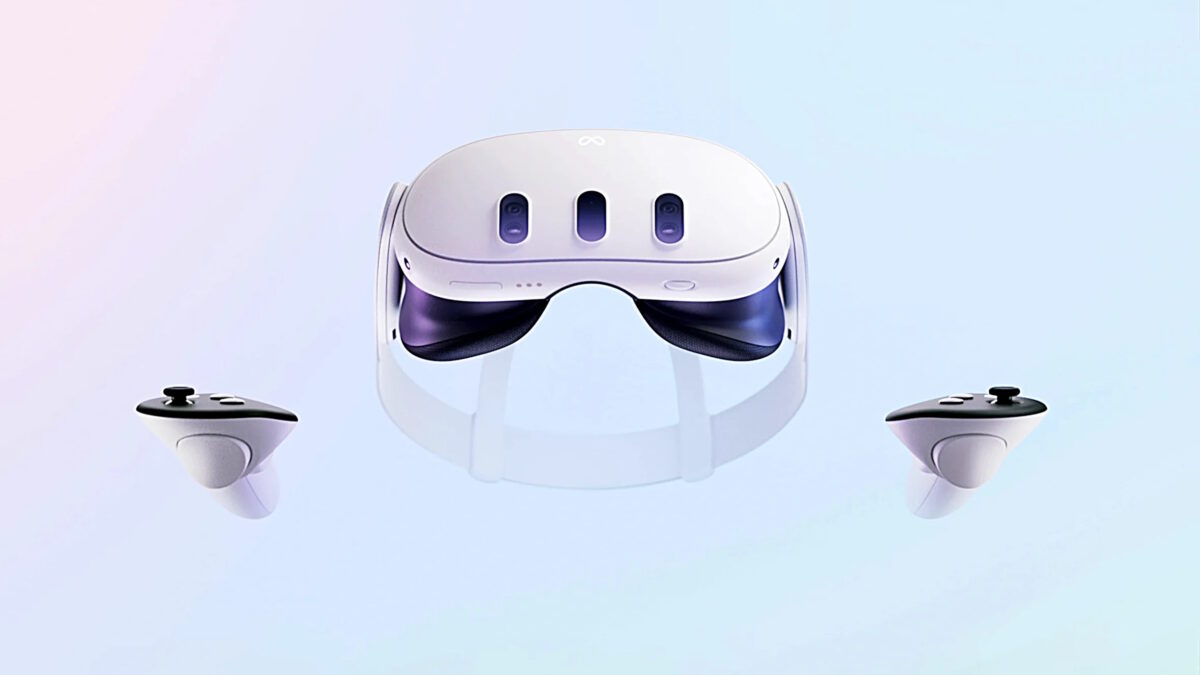[anyclip-media thumbnail=”undefined” playlistId=”undefined” content=”PHNjcmlwdCBzcmM9Imh0dHBzOi8vcGxheWVyLnBvcHRvay5jb20vYW55Y2xpcC13aWRnZXQvbHJlLXdpZGdldC9wcm9kL3YxL3NyYy9scmUuanMiIGRhdGEtYXI9IjE2OjkiIHB1Ym5hbWU9IjE5OTgiIHdpZGdldG5hbWU9IjAwMTZNMDAwMDJVMEIxa1FBRl9NODMzNSI+Cjwvc2NyaXB0Pg==”][/anyclip-media]
Playing games in VR can be such a hassle. PSVR 2 was a big improvement for Sony, since it required a single wire instead of the original set’s snaking mass of cables stuck to your head. One wire is still one wire too many, though, a tether keeping you tied to the real world, reminding you that you have a massive headset strapped to your face.
The Quest 2 solved this at the cost of losing the visual sharpness of a wired VR set, but the Meta Quest 3 goes a long way toward fixing that. Games look almost as sharp as they do with a premium tethered set.
The first thing you’ll probably notice is the Quest 3’s pass-through. The set’s six outward-facing cameras let you see your surroundings in full color, a substantial improvement over the Quest 2’s otherworldly black-and-white. You can almost read your phone screen without taking the headset off, and it tracks your hand movements, so typing or playing a virtual keyboard is a lot easier. Your vision is, admittedly, somewhat blurry, but it’s a small price for the improvement in pretty much every other area.

When you set your playspace boundary – your safety area, so you don’t go wandering into a wall – the camera automatically picks up objects and blockers with impressive accuracy as you look around the room.
Mixed reality is, unsurprisingly, a big part of the Quest 3’s focus, so it’s a bit baffling that there are so few apps that take advantage of it at launch. Sure, the option is nice to have, but it needs proper support to really get off the ground. On the bright side, there are plenty of VR games to keep busy with.
Red Matter 2 was one of the first games I checked out, a sci-fi puzzler that developer Vertical Robot upgraded with 4K textures for Quest 3. The Quest 3 features dual 2064×2208 LCD displays with 30 percent more pixel density than the Quest 2, which is tech speak for “it looks much better.”. I was genuinely surprised by how sharp it looks compared to the bland, blocky faces you see in games such as Peaky Blinders: The King’s Ransom, which, presumably, didn’t have the benefit of an upgrade for Quest 3.
If, unlike me, you don’t mind the wire, you can also hook the Quest 3 to your PC and bump its graphics capability, which means you can play more demanding games such as Half-Life Alyx and the hit simulator game Microsoft Flight Simulator on Steam, assuming you have a capable PC. Un-wired versions of these would be nice, but I have no idea how possible that even is.
The headset itself feels much more comfortable than its predecessor, thanks in part to its reduced bulk. You can bring the screens close to your eyes or take it further out if you wear glasses. Like the Quest 2, Quest 3 also has a dial that adjusts lens spacing.

VR technology usually goes hand-in-hand with discomfort, but you can easily sit with the Quest 3 stuck to your noggin until its battery drains, which happens to be about three hours into an intensive gaming session. Three hours is more than enough time for most people to spend in VR without feeling ill anyway anyway. We haven’t tested it, but it’d last longer for less intensive apps, such as some of the art or messaging apps.
One unexpected advantage of the comfort and extra mobility is that the Quest 3 actually works as a viable fitness device now. You could easily spend an hour working out on Beat Saber or one of the Quest 3’s dedicated fitness apps. Whether you want to bang drums in Ragnarock or channel John Wick in Pistol Whip, there are plenty of games and apps to work up a sweat with – but you might want to splash out for the optional silicone face pad. That default one gets damp.
Audio springs forth from the set’s side arms and a pair of decent speakers. You get a solid sense of where sound comes from, and while it won’t satisfy those with more particular tastes in audio quality, it’s decent enough that you don’t need to buy a pair of headphones right away.
The Quest 3 is one of the most comfortable headsets we’ve used, and you don’t even sacrifice image quality without the PC cable. While game consoles are seeing dwindling returns and incremental improvements in graphics between generations, VR is likely where we’ll see these huge generational leaps between devices. If Quest 3 is any indication, VR has an exciting future ahead.
Written by Kirk McKeand and Josh Broadwell on behalf of GLHF
